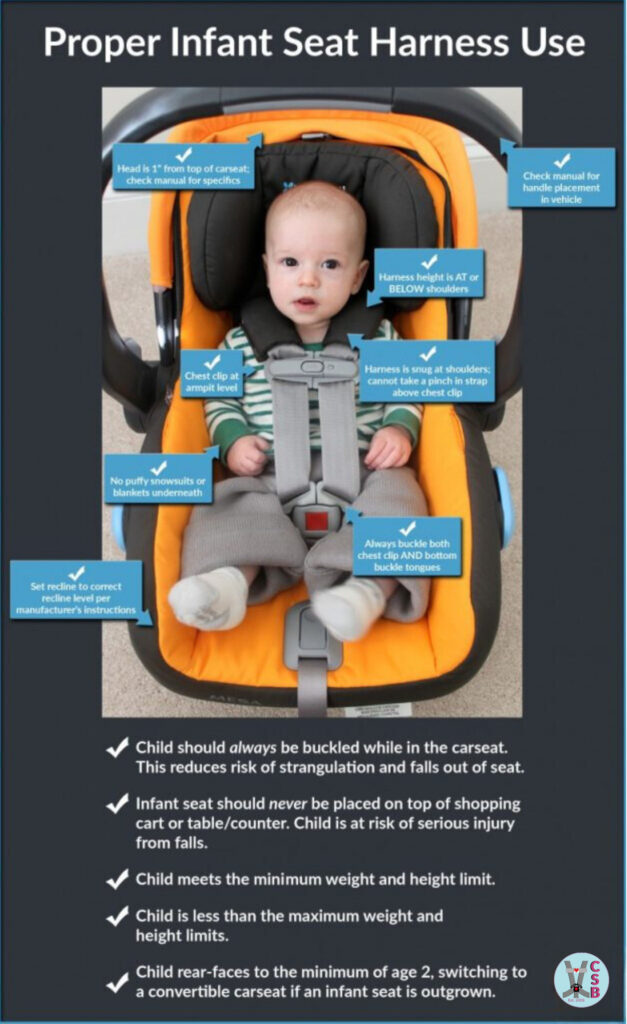Delusion: Your pediatrician is educated on little one passenger security and is an effective supply of knowledge on the topic
 Within the a few years that I’ve been concerned within the little one passenger security discipline, one of the frequent causes I’ve heard for turning kids forward-facing early or transferring them out of a booster seat too quickly is “my pediatrician stated it was fantastic.” So I assumed it might be useful to discover whether or not a pediatrician is mostly supply of automobile seat data and to attempt to to set the report straight.
Within the a few years that I’ve been concerned within the little one passenger security discipline, one of the frequent causes I’ve heard for turning kids forward-facing early or transferring them out of a booster seat too quickly is “my pediatrician stated it was fantastic.” So I assumed it might be useful to discover whether or not a pediatrician is mostly supply of automobile seat data and to attempt to to set the report straight.
Now, let’s be clear, I like pediatricians. I married a pediatrician. I don’t need, for even an immediate, to indicate that physicians are something aside from extraordinary human beings. I simply need to delve into whether or not our pediatricians are typically supply of knowledge on automobile seat security.
First, let’s have a look at medical faculty schooling. The primary 2 years of medical faculty are spent in lecture rooms listening to lectures, memorizing data and taking absurdly troublesome checks. The second 2 years are the place med college students do rotations in clinics and hospitals and sometimes look actually scared (I child, I child).
The curriculum within the first two years contains: gross anatomy, developmental anatomy, radiographic anatomy, histology, biochemistry, genetics, neuroanatomy, neurophysiology, immunology, pharmacology, ethics, vitamin and sometimes an elective or two. Wanting carefully at that record, whereas they’re studying about plenty of the rules that our automobile seat data and selections are based mostly upon, there’s not any precise schooling on automobile seats in medical faculty.
So possibly residency then?
A common pediatrics residency lasts 3 years and contains insanely lengthy hours and plenty of very laborious work. These 3 years are divided into hospital and clinic-based work the place most studying is completed by means of hands-on expertise after which hours of journal and textual content reviewing at dwelling. Throughout a pediatrics residency, the resident will spend weeks/months in most main specialties together with (however not restricted to) pediatric neurology, immunology, pulmonology, cardiology, intensive care, gastroenterology, and so on.
The American Board of Pediatrics does present a single line about automobile seats within the studying specs for pediatric residents. It states that they need to be capable of “suggest applicable automobile restraint techniques, together with automobile seats, based mostly on age and weight of the kid, together with these applicable for untimely infants.” It ought to be famous that this can be a single line in an 80-page doc of studying targets, so whereas it’s there, it’s not a good portion of the schooling of a resident.
I feel it’s additionally necessary to notice that exterior of CPST coaching, there actually isn’t a category that residents can take to find out about this. There sometimes aren’t talks about it at conferences or different frequent alternatives to be educated about it, so many instances these physicians are the very same sources that oldsters are.
I do know that my husband by no means obtained any coaching in automobile seats in his residency and that my analysis on automobile seats was primarily the primary he had ever heard about rear-facing past infancy. Whereas little one passenger security is undeniably necessary for pediatricians and their sufferers, it’s not drugs and it’s understandably not their space of focus.
Notably, the AAP (American Academy of Pediatrics) does have an up to date coverage assertion on automobile seat utilization, which is just about what your pediatrician ought to be telling you about automobile seats, if something. The latest revision, from 2018, states:
“Infants and toddlers ought to experience in a rear-facing automobile security seat (CSS) so long as attainable, till they attain the very best weight or top allowed by their CSS’s producer. Most convertible seats have limits that may allow kids to experience rear-facing for two years or extra. Youngsters who’ve outgrown the rear-facing weight or top restrict for his or her CSS ought to use a forward-facing CSS with a harness for so long as attainable, as much as the very best weight or top allowed by their CSS’s producer. Youngsters whose weight or top is above the forward-facing restrict for his or her CSS ought to use a belt-positioning booster seat till the car lap and shoulder seat belt suits correctly, sometimes once they have reached 4 ft 9 inches in top and are between 8 and 12 years of age.”
IS THIS MYTH CONFIRMED, PLAUSIBLE OR BUSTED?
Except just a few great CPST-Pediatrician hybrids, this fantasy is BUSTED.
Pediatricians are hardworking, clever folks and excellent sources of knowledge on myriad subjects associated to your kids, however while you want particular data on automobile seats and boosters, NHTSA, Protected Youngsters, CarseatBlog.com, or a neighborhood CPS Technician are normally significantly better choices.

